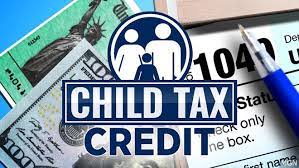Why is my tax refund amount lower/higher when I added the amount of Advanced Child Tax Credit payments I received?
If You Found The Information Here Was Useful Please Consider Sharing This Page!
Advertisement
1 Answers
WHY IS MY TAX REFUND AMOUNT LOWER OR HIGHER WHEN I ADD THE ADVANCE CHILD TAX CREDIT PAYMENTS RECIEVED

If you are one of the millions of American taxpayers receiving advance Child Tax Credit payments from the IRS this year, you may be wondering how this could affect your refund.
How does claiming these advance payments potentially affect your 2021 income tax return?
- Here are some important things to keep in mind as you think ahead to filing your taxes this spring.
What Child Tax Credit amount will I receive with my tax return?
- It depends. Another change to this year’s CTC was an increase in the credit amount from the usual $2,000 per child to $3,000 per child (and up to $3,600 for children ages 5 years old or younger). However, not all parents will qualify for the entire additional credit value if their income is above the IRS’s gradual “phaseout” thresholds.
Let’s look at a couple of examples of how the same family would calculate their credit amount in two different income situations.
Debra is a single parent with three kids ages 4, 9, and 13. She has an adjusted gross income (AGI) of $70,000 (less than the $112.5k phaseout threshold), meaning her children qualify for the full credit value available. Debra has been receiving advance monthly payments and is trying to calculate the credit amount she could receive when she files next year. Previously in 2020, she received a credit of $6,000 and she wants to know how different her credit will be this year.
Ready to do the math? Here’s one way Debra could calculate her estimated credit amount:
Determine the full potential credit value for each of her dependents.
- $3,600 for 4-year-old + $3,000 for 9-year-old + $3,000 for 13-year-old = $9,600 (total CTC value)
Calculate how much of her total CTC value she can expect to receive with her tax return.
- Since Debra has already received half of her total CTC value as monthly payments, she needs to divide her total ($9,600) by 2 to calculate how much may be left over to claim when she files.
- In this case, Debra can reasonably expect to receive a $4,800 credit when she files her 2021 tax return. Although this amount is lower than the $6,000 credit she received in 2020, the monthly payments she claimed from the IRS mean her total credit it still higher than last year, even though she is claiming a lower amount when she files.
Now let’s use the same family, but this time Debra’s AGI will be $120,000, which is above the IRS’s phaseout threshold of $112.5k for head-of-household filers. This time we will calculate her projected CTC tax refund value by looking at the monthly payments she received.
Determine her monthly CTC payment.
- Debra has been collecting from the IRS each month based on her income.
Calculate the estimated CTC credit she can expect to receive with her tax return.
- Debra has received six monthly payments totaling half of her estimated CTC value. To easily estimate the remaining CTC value she can expect to receive with her tax return, she simply needs to multiply her monthly payment by 6.
- $500 x 6 = $3,000 (estimated remaining CTC value Debra will receive when she files)
If You Found The Information Here Was Useful Please Consider Sharing This Page!
Advertisement
Please login or Register to submit your answer

